Whether you're a budding culinary enthusiast or a seasoned home chef, investing in the right knife can elevate your kitchen skills to new heights. A quality knife can make the difference between effortless, precise cuts and struggling with basic tasks. However, the wide range of options available can be overwhelming. To guide your choice, we've compiled a list of the top knives every home chef should consider adding to their kitchen.
Chef's Knife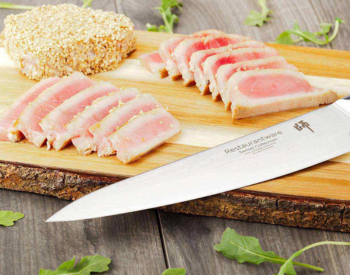
The chef's knife is the most versatile knife in the kitchen. You can use a chef's knife for chopping, mincing, dicing, and slicing. It's ideal for cutting meat, fish, vegetables, and fruits.
A good quality stainless steel blade is essential so that it stays sharp for longer than inferior blades do. The length of the blade should be between 6 to 10 inches long so that you have enough leverage while working with your food but still have control over the blade's movement when cutting through large pieces of food like ribs or chicken breasts.
Paring Knife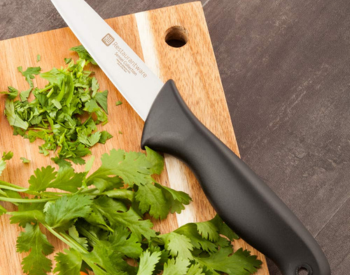
A paring knife is a small, short-bladed knife used for peeling, coring, and trimming. It's also great for small jobs like cutting out the eyes of potatoes or peaches. You should have two pairs in your collection: one with a pointed tip and one with a rounded tip. The pointed version is best for slicing delicate things like citrus fruits, while the rounded one works better when you want to chop through something like cucumbers or carrots (or if you're just feeling lazy).
Paring knives should be sharpened regularly so they stay sharp enough to cut smoothly through whatever food you're preparing--and if they get duller than usual over time, consider replacing them altogether instead of trying to use them when they're not at their best!
Bread Knife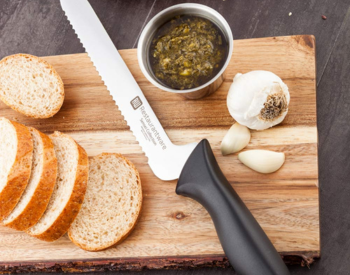
A bread knife is perfect for cutting through soft, crusty loaves and cakes. Bread knives are serrated and sharp, making them ideal for slicing through bread without crushing or tearing apart the slices. However, they're not easy to sharpen at home, you'll need an industrial sharpener or professional help if you want your blade back in top form again.
Boning Knife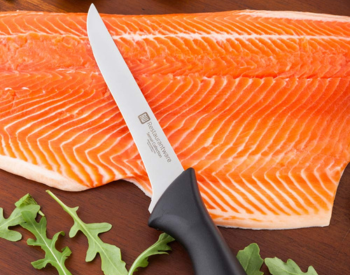
Boning knives are used to remove bones from meat. They're usually narrower and more flexible than other knives, with thin, sharp blades that allow you to cut through bone. Because boning knives are smaller than typical chef's knives, they're ideal for cutting smaller pieces of meat (like chicken breasts) or fish filets-but they can also be used on larger pieces if necessary.
If you want your home kitchen stocked with one must-have tool, this is it! A good carving knife should also have an ergonomic handle that fits well in your hand and keeps your fingers away from the sharp edge (and vice versa).
Santoku Knife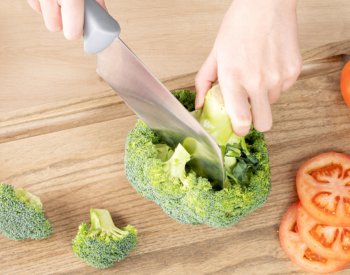
The santoku knife is versatile for everything from slicing thin slices of meat or fish to filleting fish. The blade is sharp and narrow, with a slight curve to it. This makes it ideal for getting into tight spaces, like under the bones in meat or between ribs on a fish skeleton.
The downside? The lack of weight makes this knife less suitable for chopping vegetables (unless you will slice them first). And while it can be used for slicing bread, there are better tools out there if you're looking specifically for a serrated blade - like our next pick!
Herb Scissors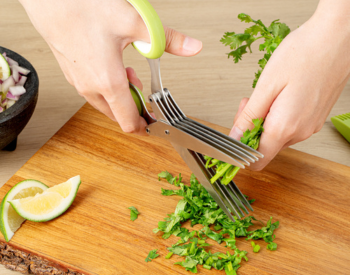
Herb scissors or herb shears are often overlooked, yet essential, culinary tools, particularly for home chefs who enjoy using fresh herbs. Unlike traditional scissors or knives, herb scissors feature multiple blades that can cut herbs into fine, even pieces in a single snip. The high-quality stainless steel blades can effortlessly cut through all kinds of herbs, and its large, comfortable handles provide a secure grip, minimizing hand fatigue. Moreover, these shears come with a comb for cleaning between the blades, ensuring a longer lifespan for this culinary tool.
What Knife Do Chefs Use Most?
Santoku knives are widely beloved and frequently used by chefs worldwide due to their versatility and precision. The word "Santoku" translates to “three virtues” or “three uses” in Japanese, highlighting its proficiency in slicing, dicing, and mincing. Santoku knives usually have a shorter, thinner blade with a slight curve, making them lighter and easier to handle than most Western chefs’ knives. This allows for a more precise, almost surgical approach to cutting, which is highly desirable in cuisines where presentation matters as much as taste. Furthermore, many Santoku knives feature a 'hollow-ground' edge - small indentations on the side of the blade that create air pockets as you cut, preventing food from sticking to the knife. This is a particular advantage when cutting through starchy or sticky ingredients. The combination of precision, versatility, and ease of use make the Santoku knife a favorite among many chefs.
Get Slicing!
When choosing a knife, consider your cooking habits and what you typically prepare. A chef's and paring knives can handle most tasks, but the other knives listed here can help make specific tasks even easier. And remember, even the best knife will dull over time, so regular maintenance is key to preserving its performance. In essence, a great knife is an extension of the chef's hand. So, pick the one that feels most comfortable to you, and you'll be slicing, dicing, and chopping like a pro in no time!






